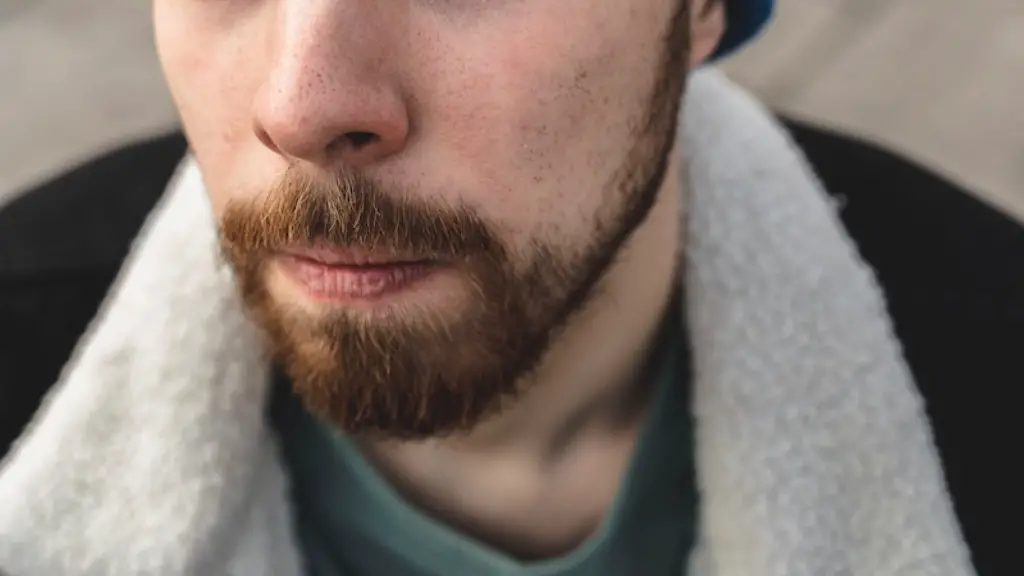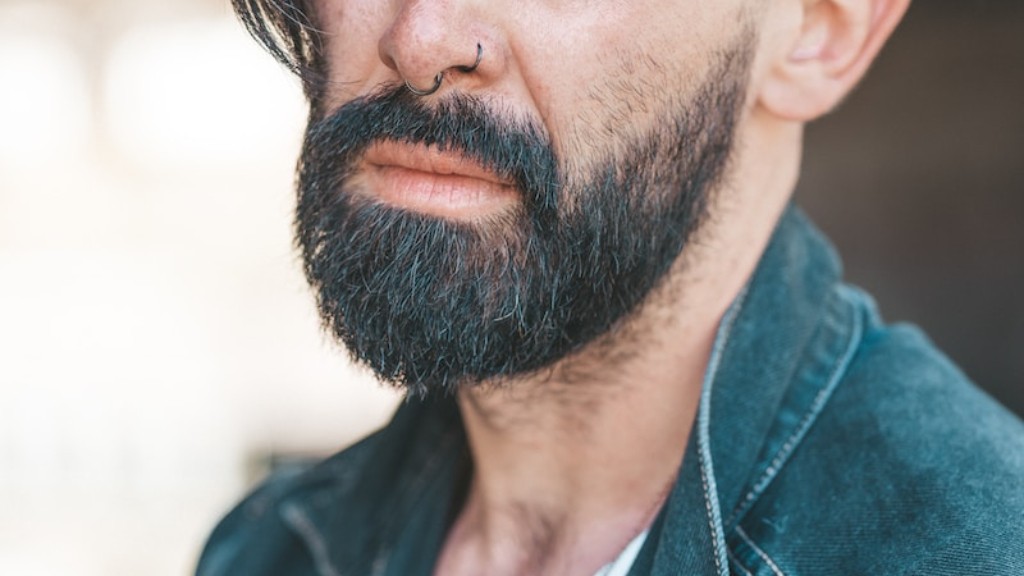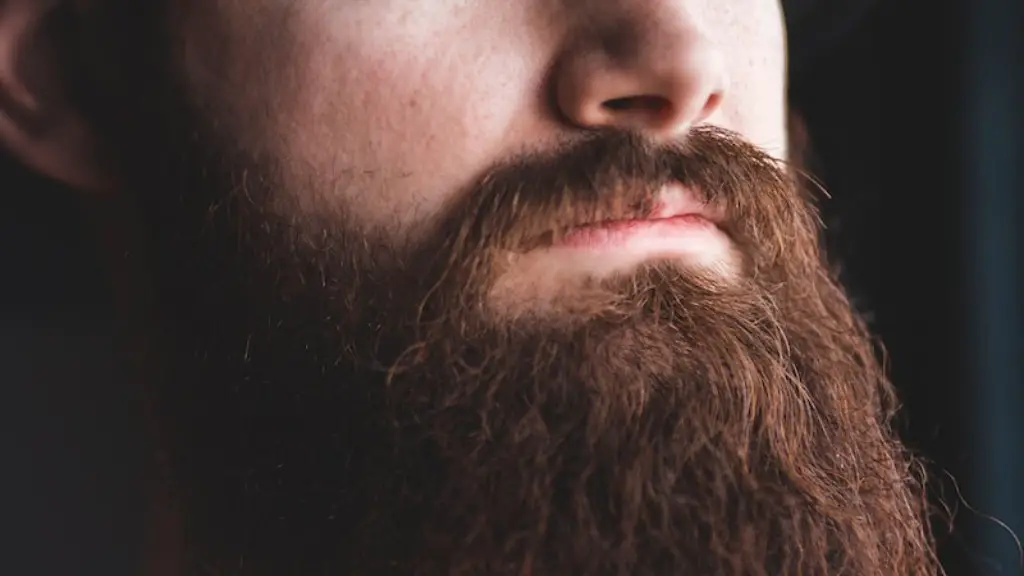Growing a beard may be seen as a mark of manliness, but many guys just don’t have the patience to see it through. Growing a good-looking, healthy beard takes time and effort. So the question for any man looking to don a full-fledged beard is, how long does it take to grow a beard?
The time it takes to grow a beard depends on several factors, including genetics, lifestyle, and the kind of beard you’re looking for. On average, beard hair grows around half an inch per month, although this can vary depending on genetics. Depending on the thickness of a person’s beard hair, it can take up to 3 months to fill in a full-fledged beard.
Healthy beard growth also depends on a person’s lifestyle. Eating a balanced diet with enough zinc, iron, and protein can help support a healthy beard. Staying hydrated and exercising regularly can also help keep beard hair healthy and growing. Avoiding stress and getting enough rest can also help ensure that facial hair grows in thick and healthy.
But growing a healthy, attractive beard isn’t just about if and how fast it can grow – it’s also about the texture and colour of the hair. Darker hair tends to look thicker and fuller than light-coloured hair. Consequently, if you have lighter hair, it can take longer to fill in your beard and get it looking thick and full.
And finally, it’s also important to consider the kind of beard you’re looking for. If you’re looking for a full-grown, ZZ Top-style beard, then it could take over a year for it to fill in. On the other hand, if you’re just looking for a stubble, then you can probably get away with a couple of months of growth.
Beard Grooming
Once you’ve put in the effort to grow a beautiful beard, you’ll want to ensure that it stays looking full and healthy. One of the best things to do is to invest in a good beard grooming kit including a boar’s hair brush and a beard trimmer. Additionally, beard oil can help keep the hair soft, moisturized, and manageable. Applying beard oil daily can help keep your beard looking neat and groomed, and can also help promote healthy growth.
Brushing your beard regularly with a boar’s hair brush can help stimulate your skin and facial hair follicles, which can help improve blood-flow and encourage facial hair growth. Additionally, a beard trimmer can help keep your facial hair neat and tidy. You don’t have to trim it every day, but keeping it trimmed will help keep it looking neat and tidy.
Beard Maintenance
In addition to beard grooming, there are a few other things you can do to keep a healthy, lush looking beard. The first is to make sure you’re getting enough vitamins and minerals. Vitamins such as Biotin and Zinc, as well as minerals likeIron, Magnesium, and Vitamin C can all help promote healthy growth. Additionally, avoiding alcohol and smoking can help keep your beard looking and feeling healthy.
Lastly, it’s important to take care of your skin under your beard. Make sure to use a gentle cleanser every day to keep your skin clean and moisturised. Avoid using anything too harsh or drying, as this can lead to dry, flaky skin and damage beard hair.
Beard Care Tips
Once you have grown your beard, it’s important to take care of it. Here are some useful tips to keep your beard looking and feeling its best:
- Clean and condition your beard every day to keep it looking healthy.
- Trim your beard regularly using a trimmer to keep it looking neat and tidy.
- Use beard oil or balm every day to help keep it moisturised and healthy.
- Comb your beard with a boar’s hair brush to help stimulate circulation.
- Avoid products with harsh chemicals that can damage the hair.
Beard Styles
When it comes to growing a beard, the sky’s the limit. There are dozens of different styles that you can choose from, from full-fledged beards to designer stubble. Popular styles include the Van Dyke, the Balbo, the Goatee, and the Circle beard. Additionally, you can always opt for something else, such as an all-over stubble or something else.
No matter which style you choose, there are a few things to keep in mind. Different facial shapes require different beard styles. If you have a round face, for example, then you may want to opt for a beard that goes up and out, such as a Balbo or Goatee. Additionally, different beard styles require different length to fill in – so be sure to research the style you want to ensure you grow your beard the right way.
What to Avoid
When growing a beard, there are a few things you should avoid. The first is itching. As your beard grows in, you may land yourself with an itchy beard – but try to resist the urge to scratch and pull on it. Scratching or pulling your beard can damage hair follicles, which can inhibit healthy growth.
It’s also important to avoid using too much product. Too much product can lead to brittle, dry hair and an oily, greasy look. Additionally, use products specifically designed for beards, as shampoo and conditioner are too harsh for beard hairs.
Myths About Growing a Beard
There are plenty of myths around growing a beard. One of the most popular myths is that you should leave your beard to grow ‘wild’ – this isn’t true. In order to maintain a healthy, well-groomed beard, it’s important to wash and condition your beard regularly, use beard oil, and brush and trim it. Additionally, eating a healthy, balanced diet can help promote healthy beard growth.
Another popular myth is that beards can make you look older – this isn’t true either. With proper care and grooming, a beard can help you look presentable and sophisticated. Additionally, it can help mask flaws, hide blemishes and scars, and draw attention away from certain areas of your face.




